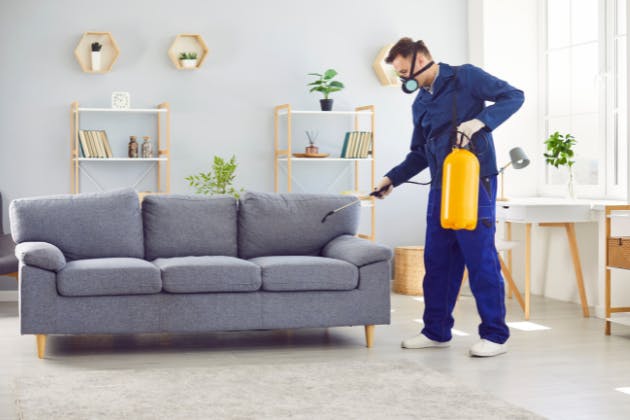Whether you're dealing with mice in the loft or ants in the kitchen, knowing what to expect during a pest control visit can make the process smoother and more effective. This blog explains each stage of a professional pest inspection and treatment, so you know how to prepare and what steps follow after the visit.

What to Expect During a Professional Pest Control Visit
Initial Assessment and Key Questions
The visit begins with a detailed conversation about your pest concerns. A technician will ask when and where you’ve seen pests, heard strange noises, or noticed damage. This helps them gauge the extent of the problem and determine which pests may be involved. The more specific your answers, the more accurate the diagnosis and treatment plan will be.
Interior and Exterior Inspection
After the initial chat, the technician will carry out a thorough inspection of your home. Inside, they’ll focus on areas like kitchens, bathrooms, and storage spaces—checking for signs like droppings, gnawed materials, or nests. Outside, they’ll inspect gaps in doors or windows, overhanging branches, attic vents and standing water that might attract pests or offer easy access.
Spotting Signs of Infestation
During their inspection, professionals look for entry points, nesting evidence, damage to wood or insulation, and any conditions that encourage pest activity—such as moisture or food waste. These signs may not always be obvious to homeowners but are critical to long-term prevention.
How to Prepare for the Visit
Before the visit, it’s helpful to tidy up areas that need inspecting. Clear worktops, empty under-sink cupboards, move furniture from walls, and make sure pets are safely out of the way. This allows the technician to access all necessary spaces without disruption and complete a more thorough assessment.
Treatment and Prevention Strategy
Based on what they find, your pest control expert will recommend a treatment plan. This could involve traps, baits or chemical treatments, depending on the pest type and severity. They’ll also give advice on preventing a return—whether that’s sealing gaps, fixing leaks, or changing waste storage habits.
Ongoing Monitoring and Support
One visit is rarely enough for full control. You’ll often need follow-ups to check that treatments are working and reinforce any prevention measures. Your technician may schedule a revisit or leave guidance on how to monitor pest activity and keep your home protected over the long term.
FAQs
Take Control of Your Pest Problem
If you’re seeing signs of pests in your home or business, don’t wait until it gets worse. Call Pegasus Pest Solutions on 07501702101 or 02393092101, or fill out our contact form to schedule a professional inspection in Hampshire, Portsmouth, Fareham or nearby areas.


